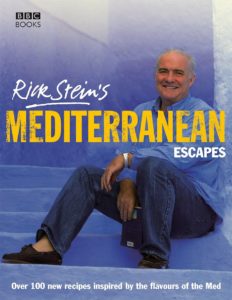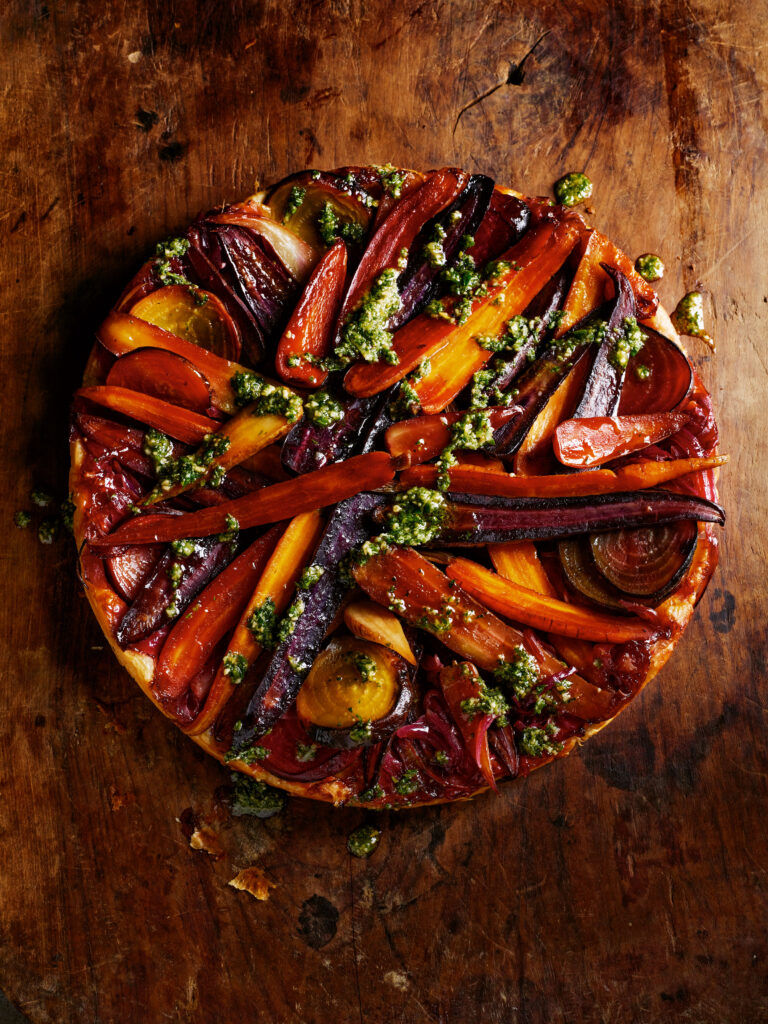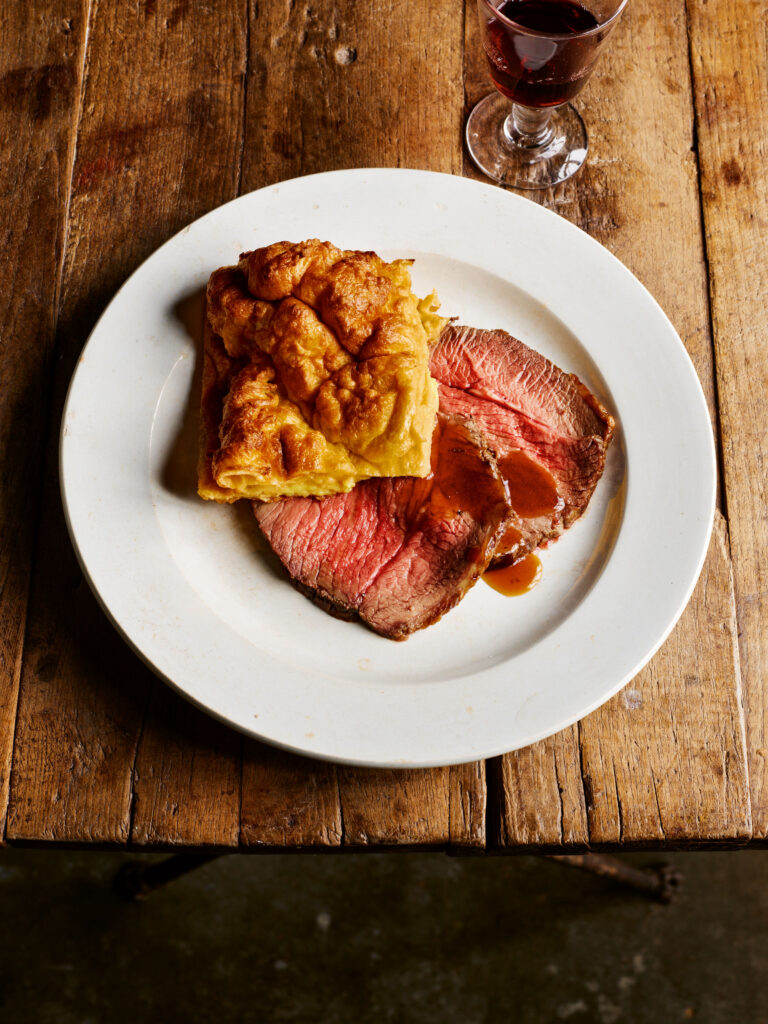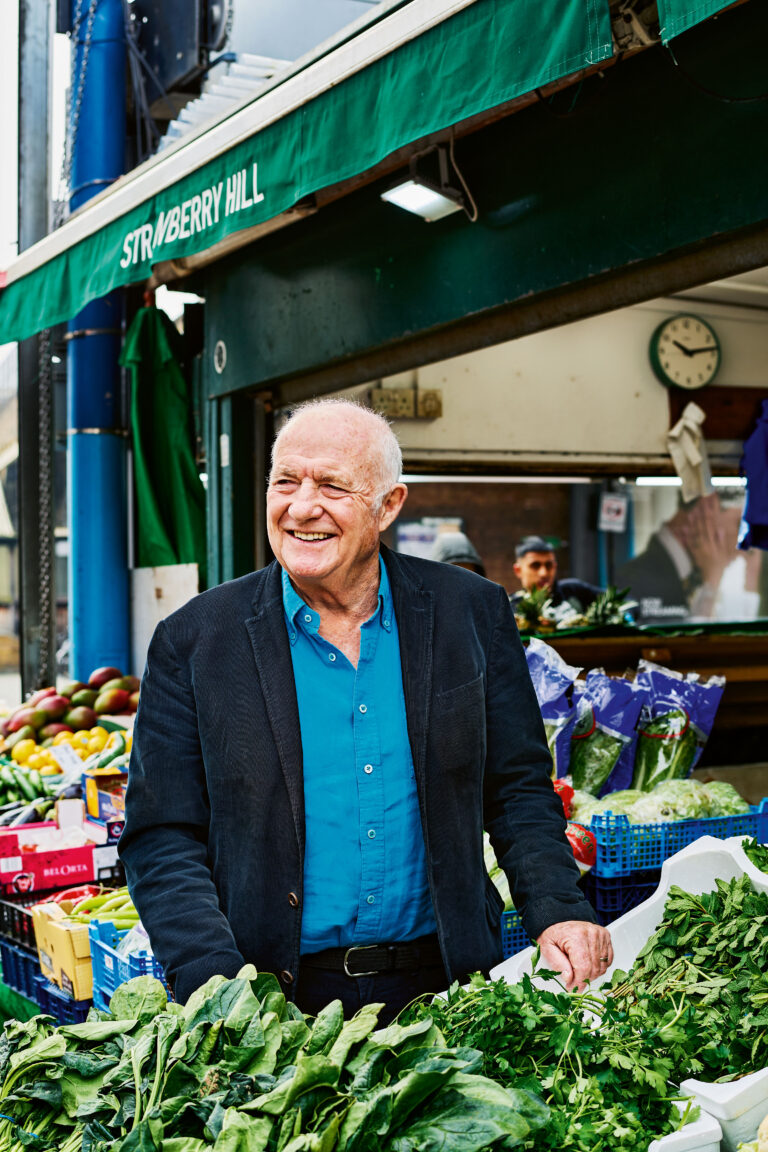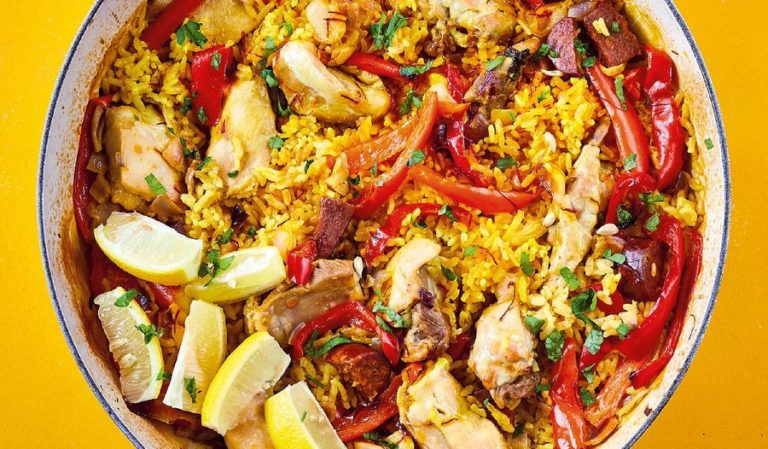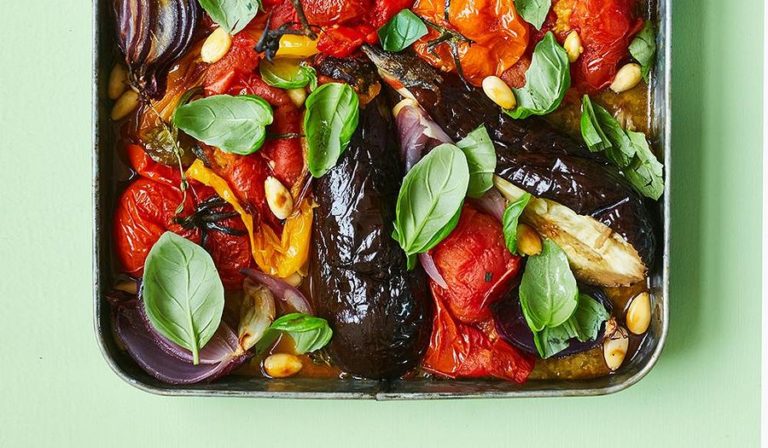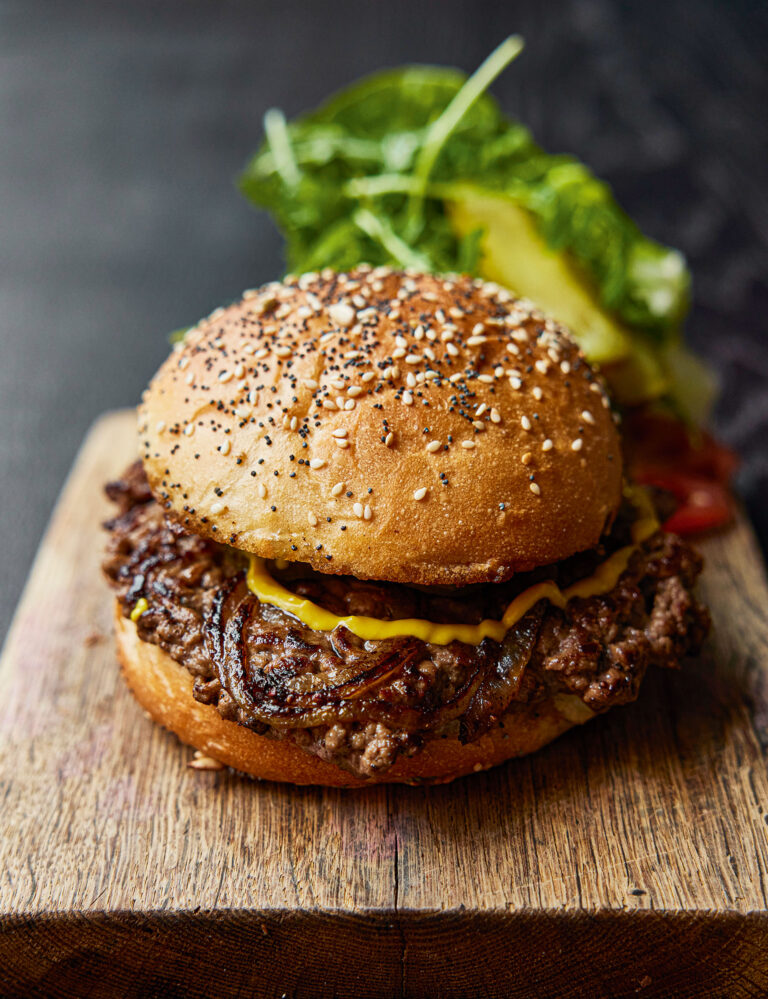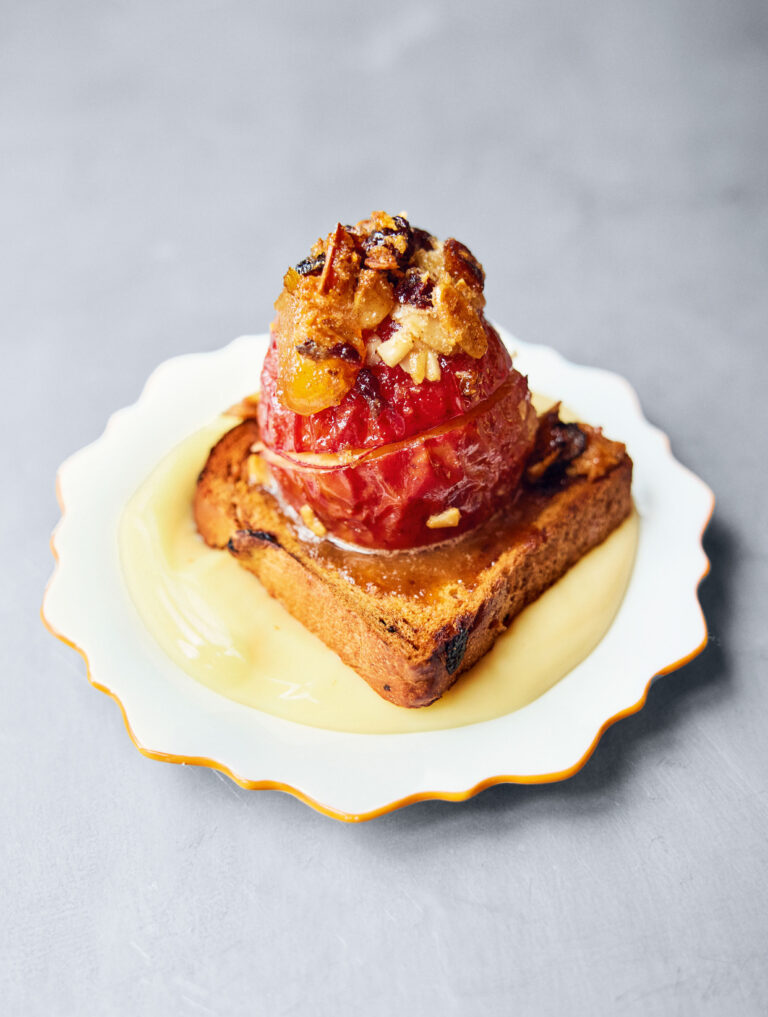Rick Stein’s Chicken and Prawn Paella with Artichokes and Chorizo
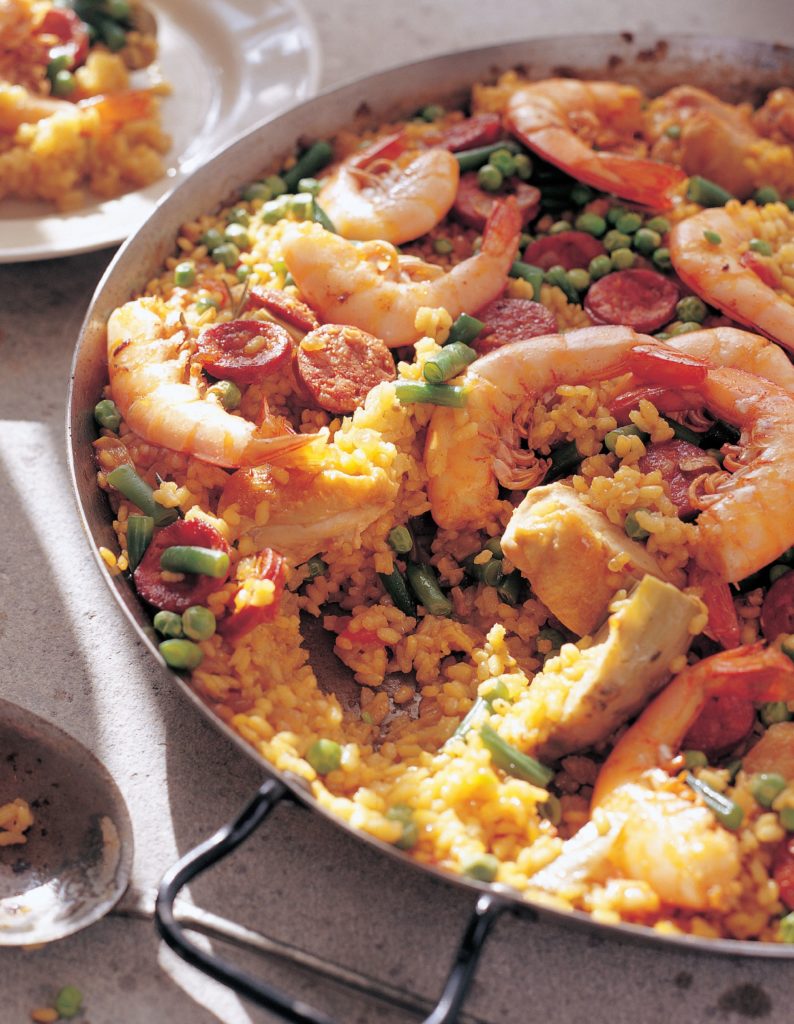
An inspiring chicken and prawn paella with artichokes and chorizo. This Rick Stein recipe, from his Catalonia travels, is perfect for a large group of people.
Introduction
I have been the victim of many bad paellas in my life, and I sometimes wonder if it isn’t all just hype. It’s the same with other world-famous dishes – bouillabaisse and cassoulet are two more perfect examples. When they are good they are very, very good, but when they are bad they are horrid. I think there are two main concerns with paellas. First, the rice must be proper paella rice – arroz calasparra – and second, it shouldn’t contain too much long-cooked seafood, which ends up tasting like stewed tea. It’s also important that once the rice is added to the pan, it is not touched. In paella, you are trying to produce the exact opposite to risotto. In other words, all the grains of rice should be separate (whereas in risotto, by constant stirring, you make it creamy). For my paella I’ve chosen a mix of chicken, seafood and vegetables. I particularly like the artichoke hearts, and the flavour of rosemary and saffron too, and above all a brilliant stock to start with. Finally, you really do need to get, if not a paella pan, a very large frying pan for this, and if you are cooking this over anything other than a special paella gas burner, then you need to place it over two or even three burners and keep turning the pan so that it cooks evenly throughout. Mind you, true paella pans and burners are easily available over the internet. This is a great dish for a big group of people.
Ingredients
| 1 x 1.5kg | chicken |
| 1.75l | chicken stock |
| ½ tsp | loosely packed saffron strands |
| 150ml | olive oil |
| 8 | garlic cloves, sliced |
| 16 | large raw prawns, heads removed but left unpeeled |
| 150g | chorizo picante, sliced |
| 2 | medium onions, chopped |
| 2 | beef tomatoes, skinned and chopped |
| 750g | arroz calasparra |
| 300g | prepared artichoke hearts |
| Leaves from 10cm rosemary sprig | |
| 150g | fine green beans, stalk ends trimmed, cut into 1.5-cm pieces |
| 150g | shelled fresh peas |
| Salt |
Essential kit
You will need a 40cm paella pan or frying pan.
Method
Joint the chicken and remove the bones from the breasts and thighs. Cut the knuckle end off each drumstick and leave the wings as they are. Cut the breast and thigh meat into large chunks. You could ask your butcher to do this for you.
Put the stock into a large pan, acid the chicken bones and leave to simmer for 20 minutes. Strain into a clean pan, add the saffron strands and keep hot.
Heat 4 tablespoons of the oil in a 40cm paella pan over a medium-high heat, add the chicken and fry until golden brown. Remove the chicken and set aside on a plate.
Add another 2 tablespoons oil to the pan with half the garlic, the prawns and chorizo sausage, and fry for 1 minute until lightly golden. Set aside on another plate.
Add the onions, the remaining oil (4 tablespoons) and garlic to the pan and cook for 5 minutes until lightly golden. Add the tomatoes and leave to cook over a low heat for 15 minutes until you have a jamlike consistency.
Add the rice to the pan, turn up the heat and fry for a minute or two. Then add the stock, the chicken pieces, the artichokes, rosemary and 2 teaspoons of salt and stir briefly to distribute everything evenly around the pan. Leave to simmer for 20 minutes, turning the pan now and then if necessary so that it cooks evenly.
Meanwhile, drop the beans into a pan of boiling salted water and cook for 3 minutes. Drain and refresh under cold water.
Scatter the beans, peas, prawns and chorizo over the top of the rice and cook for a further 10 minutes, by which time the rice should have absorbed all the stock and be tender, and all the other ingredients should be cooked. A slightly brown crust on the base of the paella is acceptable but take care not to let it burn during cooking.
Leave the paella to rest off the heat for 5 minutes before serving. The Spanish prefer to serve it warm rather than hot.
Reviews
Have you tried this recipe? Let us know how it went by leaving a comment below.
Thank you for your rating. Our team will get back to any queries as soon as possible.
Please note: Moderation is enabled and may delay your comment being posted. There is no need to resubmit your comment. By posting a comment you are agreeing to the website Terms of Use.

